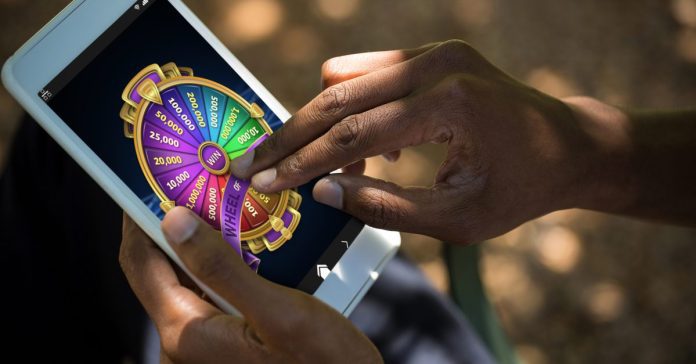Lie Detectors: Unmasking Truth and Deception
Introduction to Lie Detectors
Lying has been a part of human interactions for centuries. Whether in personal relationships, criminal investigations, or corporate dealings, deception can lead to serious consequences. To counteract this, lie detection technology has been developed to help uncover the truth. Lie detectors, also known as polygraphs, have been a subject of fascination and controversy for decades. They are used worldwide by law enforcement agencies, private investigators, and even employers. But how do they work? Are they reliable? And can they truly detect lies with accuracy? This article delves deep into the science, application, effectiveness, and controversies surrounding lie detectors.
How Lie Detectors Work
Lie detectors function by monitoring physiological responses that change when a person is under stress or attempting deception. The polygraph machine measures physiological indicators such as heart rate, blood pressure, respiratory rate, and skin conductivity. These responses are recorded while a person answers a series of questions.
A typical polygraph test consists of three types of questions: control questions, relevant questions, and irrelevant questions. Control questions are designed to establish a baseline of physiological reactions. Relevant questions focus on the specific issue being investigated. Irrelevant questions, on the other hand, serve as neutral questions to compare responses. If a person exhibits significant physiological changes when answering relevant questions compared to control questions, it may indicate deception. However, these physiological changes do not directly prove lying—only that the person may be experiencing stress or anxiety related to the question.
Polygraph examiners are trained to interpret the results, looking for patterns that suggest dishonesty. The test is conducted in a controlled environment to minimize external factors that could influence the results. However, despite its scientific foundation, the accuracy of lie detectors remains a topic of debate.
The Science Behind Lie Detectors
Lie detectors operate on the principle that deception triggers involuntary physiological responses. When a person lies, their body may experience stress, causing measurable changes in bodily functions. The polygraph machine records these changes through sensors attached to the individual’s body.
- Heart Rate and Blood Pressure – When a person is nervous or anxious, their heart rate increases, and blood pressure may rise. A significant spike in these readings when answering a relevant question can indicate deception.
- Respiratory Rate – Lying can alter a person’s breathing pattern. A decrease or irregular breathing pattern while answering a critical question could be a sign of stress related to deception.
- Galvanic Skin Response (GSR) – The skin’s electrical conductivity changes when a person sweats. Increased sweating is associated with nervousness, which can be detected by the polygraph machine.
While these physiological changes can indicate stress, they do not necessarily mean the person is lying. Many factors, including anxiety, fear, or even medical conditions, can cause similar responses. This has led to ongoing debates about the reliability of polygraph tests in accurately detecting lies.
Applications of Lie Detectors
Lie detectors are used in various fields, including law enforcement, private investigations, employment screening, and personal matters.
1. Law Enforcement and Criminal Investigations
One of the most common uses of lie detectors is in criminal investigations. Police departments and federal agencies use polygraphs to question suspects, witnesses, and even potential law enforcement officers during recruitment. In some cases, polygraph tests help investigators narrow down suspects by identifying inconsistencies in their statements. However, due to concerns about reliability, polygraph results are generally not admissible as evidence in court.
2. Employment Screening
Some employers use lie detectors to assess potential employees, especially in jobs requiring high levels of trust, such as law enforcement, intelligence agencies, and private security firms. The goal is to determine whether a candidate has a history of dishonesty, criminal activity, or drug use. However, in many countries, laws restrict the use of polygraphs for employment screening, citing ethical concerns.
3. Relationship and Personal Matters
In some cases, individuals use lie detectors in personal relationships to verify honesty regarding infidelity, financial issues, or other matters. While this practice is controversial, some couples turn to polygraph tests as a last resort to resolve trust issues. However, emotions can influence test results, making the accuracy of such tests questionable.
4. Corporate and Financial Investigations
Businesses sometimes use lie detectors to investigate fraud, embezzlement, or internal security breaches. Companies dealing with sensitive information or large financial transactions may use polygraph tests to ensure employees’ integrity. However, ethical concerns and legal restrictions limit the widespread use of lie detectors in corporate settings.
Accuracy and Reliability of Lie Detectors
The effectiveness of lie detectors is a topic of ongoing debate. While polygraph advocates claim high accuracy rates, skeptics argue that results can be influenced by various factors. Research suggests that polygraphs are not foolproof, with accuracy rates varying between 70% and 90%. False positives (where a truthful person is deemed deceptive) and false negatives (where a deceptive person passes the test) can occur.
Several factors affect the reliability of lie detectors, including:
- Examiner Expertise – The skill and experience of the polygraph examiner play a crucial role in the test’s accuracy. Poorly trained examiners may misinterpret physiological responses, leading to inaccurate results.
- Individual Differences – People react differently to stress. Some individuals may naturally exhibit anxiety during questioning, even if they are telling the truth. Conversely, skilled liars or individuals with sociopathic tendencies may control their physiological responses, making deception harder to detect.
- Countermeasures – Some individuals attempt to manipulate polygraph results using countermeasures, such as controlled breathing, muscle contractions, or mental distractions. While examiners are trained to detect these tactics, they can still affect the test’s accuracy.
- Psychological and Medical Conditions – Certain medical conditions, medications, or psychological disorders can influence physiological responses, potentially leading to misleading results.
Due to these limitations, many legal and scientific experts argue that polygraph tests should not be solely relied upon to determine truthfulness.
Legal and Ethical Considerations
The use of lie detectors raises significant ethical and legal concerns. In many countries, laws regulate the use of polygraphs to protect individuals’ rights. For instance, in the United States, the Employee Polygraph Protection Act (EPPA) restricts most private employers from using lie detector tests for hiring decisions. Similarly, courts in many jurisdictions do not accept polygraph results as definitive evidence due to concerns about accuracy and potential bias.
Ethical concerns also arise regarding privacy and the psychological impact of polygraph tests. Being subjected to a lie detector test can be stressful, even for truthful individuals. Critics argue that the anxiety caused by the test itself can lead to false positives, unfairly damaging a person’s reputation. Furthermore, relying on polygraph results in legal and employment decisions raises questions about personal freedoms and due process.
Alternatives to Lie Detectors
Given the controversies surrounding polygraph tests, researchers have explored alternative methods for detecting deception. Some promising techniques include:
- Brain Scanning (fMRI and EEG) – Functional Magnetic Resonance Imaging (fMRI) and Electroencephalography (EEG) measure brain activity to detect deception. These methods are still in the experimental stage but show potential for future use.
- Voice Stress Analysis (VSA) – This method analyzes variations in a person’s voice to detect stress related to lying. However, like polygraphs, it has limitations in accuracy.
- Behavioral Analysis – Observing body language, micro-expressions, and speech patterns can provide clues about deception. While not foolproof, trained professionals can use these techniques alongside other investigative methods.
Conclusion: Are Lie Detectors Reliable?
Lie detectors remain a controversial tool in truth verification. While polygraphs can provide insights into physiological responses, they are not definitive proof of deception. The accuracy of lie detectors depends on various factors, including the examiner’s expertise, the subject’s psychological state, and potential countermeasures.
While polygraphs continue to be used in law enforcement, employment screening, and personal matters, their limitations and ethical concerns cannot be ignored. As technology advances, alternative methods of lie detection may offer more reliable solutions. Until then, polygraphs should be viewed as one piece of the puzzle rather than a foolproof method of uncovering the truth.
For professional polygraph services and expert advice, visit Liedetectors.ie to learn more about how lie detection works and its applications in various fields.
Available Addresses for Inclusion:
Dublin:
Ballycoolin – 1 Ballycoolin Rd, Ballycoolin, D15 AKK1
Sandyford – The Chase, Sandyford, D18 Y3X2
Pembroke House – Pembroke House, D02 NT28
Drogheda:
56 West St, Moneymore, Co. Louth, A92 E4CY
Monaghan:
Marian Industrial Estate, H23 X273
Northern Ireland:
Belfast – Cromac St, BT2 8LA
Newry – Ground and 1st Floor, 30 Kilmorey St, BT34 2DE
Coleraine – Regus, River House, Londonderry, BT51 3DR







